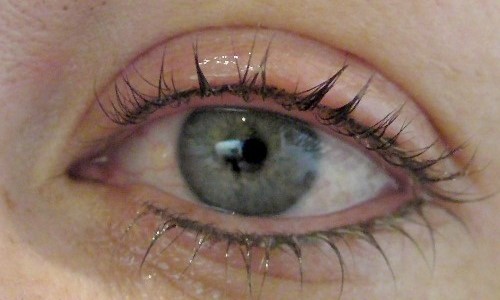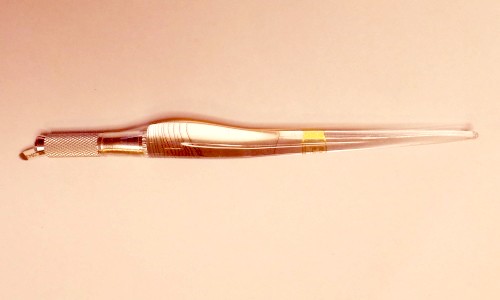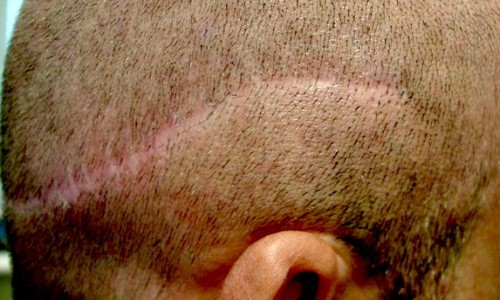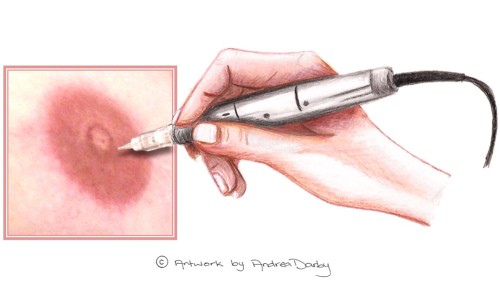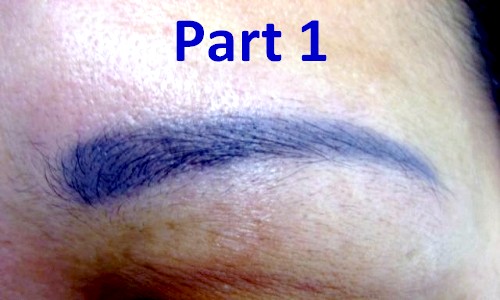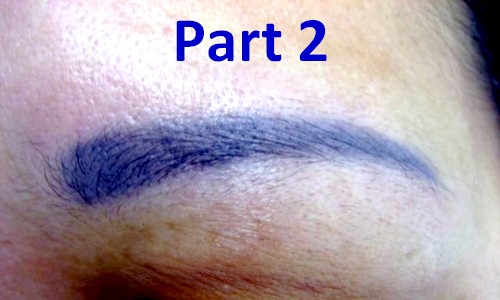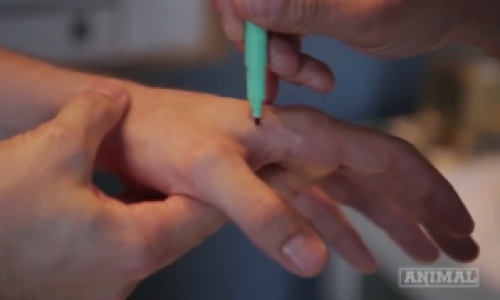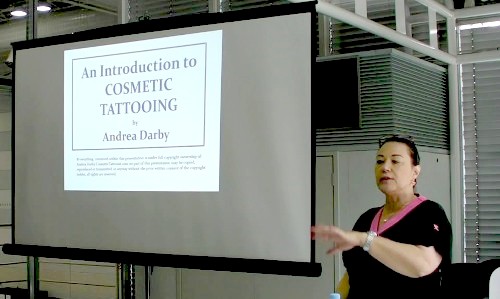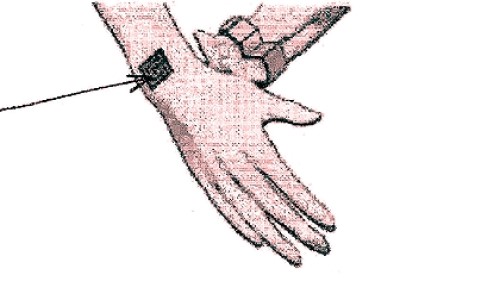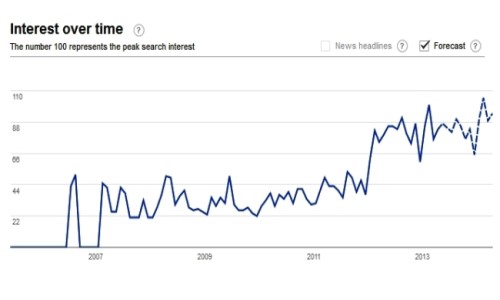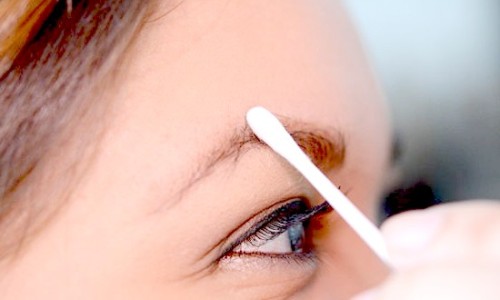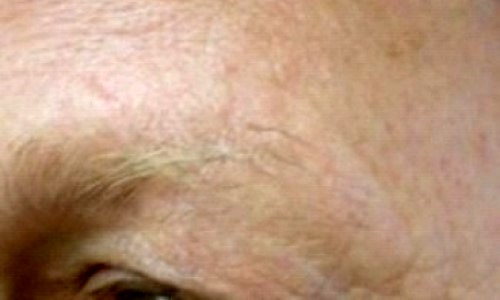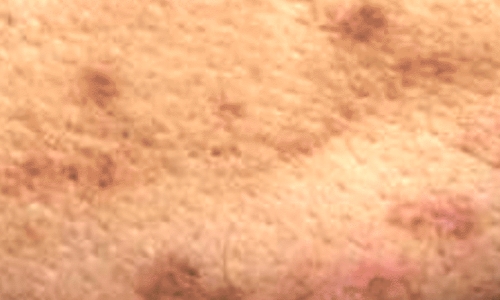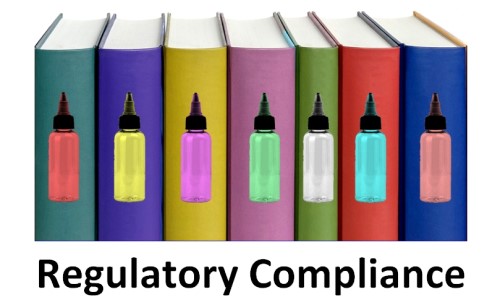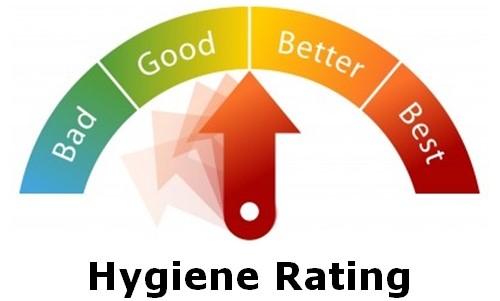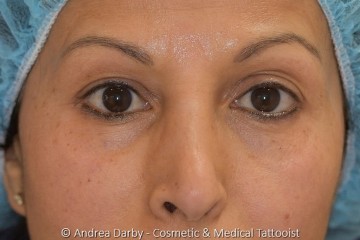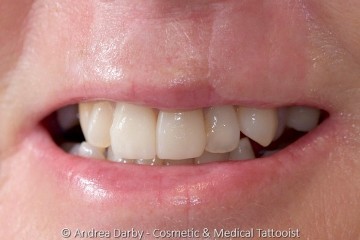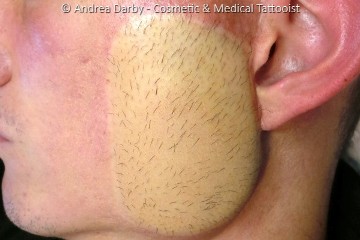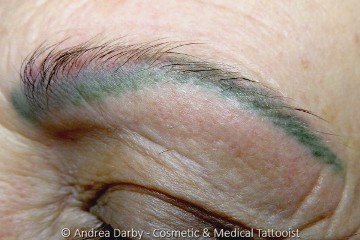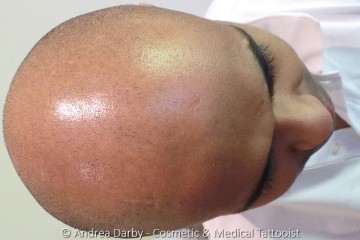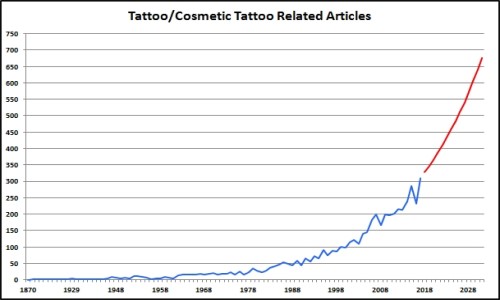|
In 2013 the First International Conference on Tattoo Safety was held in Bundesinstitut für Risikobewertung Berlin and Nicolas Kluger M.D. from University of Helsinki Finland described how he and his colleague Virve Koljonen had extensively reviewed the literature and found only 50 published cases of skin cancer within tattoos1. Their findings were published in Lancet Oncology in 20122;
• 23 cases of squamous-cell carcinoma and keratoacanthoma
• 16 cases of melanoma
• 11 cases of basal-cell carcinoma
Dr. Kluger remarked that "the number of skin cancers arising in tattoos is therefore seemingly low".
Several subsequent patient case reports related to carcinomas within tattoos published by other practitioners have also referred to there only being approximately 50 skin cancers within tattoos that have been reported in the past 40 years3. The incredibly low incidence of case reports has led to the logical conclusion by many within the medical community that an association between a pre-existing tattoo and a subsequent carcinoma in the same location could be considered to be purely coincidental1.
Some medical experts have gone further and declared that Dermatologists "have never found an increased prevalence of the disease" in those with tattoos and for those who have previously had melanoma "inks used in tattoos have never been shown to increase their risk of recurrence"4. Some tattooists have interpreted these types of comments by members of the medical community to be conclusive proof that tattoos cannot and do not cause or contribute to the development of any form of skin cancer and may assume that those who have previously had a cancer within a tattoo do not require medical advice nor to exercise caution prior to undergoing tattooing again as they may incorrectly interpret the general position of the medical community to mean there is absolutely no risk.
However many research scientists have expressed concern about the presence of nano-particles5,6 and carcinogenic compounds either contained within some tattoo inks or potentially cleaved from the colourant’s during breakdown by metabolism, ultraviolet light exposure, or subsequent to laser tattoo removal attempts, such as heavy metals, polycyclic aromatic hydrocarbons and some of the azo dyes7,8,9,10,11,12.
Over recent years regulators have become more active with surveillance, testing and recall recommendations when tattoo pigments are discovered to contain substances that may be harmful to human health. The European Commission's RAPEX rapid alert system is being routinely used by countries both inside and outside the Euro Zone for the purpose of rapid dissemination of alerts related to non-food products including alerts related to tattoo pigments.
When discussing the low case report statistics for cancer-in-tattoos casual comparisons are sometimes drawn between the case report statistics and the prevalence of tattooing or the annual incidence of skin cancers as evidence of an absence of correlation. Our immediate impression is that the broad assumptions being drawn from such a small dataset of cancer-in-tattoo case reports is extraordinary especially given that the case report statistics are obviously anomalous, however as yet this does not seem to be a central focus within the discussion.
Reactive Elimination/Expulsion
Some medical practitioners have cautiously discussed the possibility that their individual patient cases of cancer within tattoos could have stemmed from a reactive trans-epidermal elimination of the tattoo pigment3,13. The hypothesis is supported by the role that chronic allergic contact dermatitis may potentially have in a cause and effect relationship with the development of skin cancers14, inflammatory processes involving tattoos also have the added complication of a chemical foreign body within the skin self perpetuating the reactive cycle.
Reactive elimination may be a process that is initiated in response to a single chemical colourant, many countries have identified specific colourants that should be eliminated from the ingredients used for compounding tattoo pigments, however cross sensitivities can sometimes occur with chemical sensitivity reactions either to similar chemical substances or a broader range of chemical substances (e.g. general chemical sensitivity).
Other medical practitioners have suggested that dermatome shaving should be considered as a first line treatment for chronic tattoo reactions15, the suggestion has merit in order to facilitate removal of the chemical irritant from the skin in comparison to break down by laser removal as the latter may result in systemic reactions, unfortunately due to the anatomical locations involved dermatome shaving probably would not be an option for many cosmetic tattoos (e.g. eyeliner, lips).
If chronic irritation is a precursory step towards the potential development of a reactive elimination cycle then any chronic tattoo reaction should be taken seriously and warrants review by dermatology specialists.
How Anomalous Are the Cancer-in-Tattoo Case Report Statistics?
We approached this question by correlating the average prevalence of tattooing with the annual incidence of skin cancer and estimating the odds of a tattooed person developing a cancerous lesion within their tattoo (unrelated to cause and effect) by calculating average Tattoo Surface Area (TSA) to Body Surface Area (BSA) as a percentage.
TSA/BSA Percentage: Typically either the DuBois and Mosteller's formulas are utilised to estimate BSA based upon a patients height and weight often average estimates such as 1.6 m2 for adult females and 1.9 m2 for adult males are quoted. Verbraecken et al evaluated 1868 adult patients16 (M/F 1426/443) 397 normal weight, 714 overweight, and 757 obese, the overall BSA was calculated to be 2.04 ± 0.24 m2 and an average BSA of 1.79 m2 was calculated for 3,613 adult cancer patients in a study within the UK in 200517.
Although the sample size was smaller we decided to use the average BSA of 2.04 from the Verbraecken study due to the fact that it was not skewed by the adverse patient health in the UK cancer patient study as a lower BSA may have artificially increased the TSA/BSA percentage.
Average tattoo surface area can vary markedly from individual to individual, a German nationwide survey published in 201018 reported that tattoos covered more than 300cm2 of the surface of the skin in 61% of the cases. Based on a BSA of 2.04 this would imply a TSA/BSA percentage of around 1.47%. This is similar to estimates by researchers on behalf of the Danish environmental protection agency who estimated that on average tattoos cover around 2.5% of the skin surface, roughly corresponding to a surface area of about 2½ palms per person19.
Based on the above we estimate the average TSA/BSA Percentage to be roughly 1.5-2.5% of total body surface area, in other words people with tattoos on average are covering this approximate area of their total body surface with the tattoo.
Prevalence of Tattooing: Public health officials from the Health Protection Agency, Colindale United Kingdom conducted a review of published epidemiological studies related to tattooing20 and found that the prevalence of tattooing tended to increase with successive surveys that were conducted and ranged between 6% in some surveys (USA 21%, Germany 8.5%) up to as high as 25.2% to 37.4% for military personnel21.
The Director, Research School of Social Sciences, Australian National University, Canberra Australia reported that the prevalence of tattooing in Australia in 1998 was 11.9% for males and 8.5% for females and at that time assumed that around 1 in 10 Australians will have had a tattoo at some point in their lives2.
In reference to the above reports we estimate global tattoo prevalence to be between 5-10%, this appears to be a conservative estimate particularly as successive surveys indicate an increase in incidence and prevalence of tattooing within most countries.
Estimate of Expected Incidence of Cancer within Tattoos: Based upon tattoo prevalence and TSA/BSA Percentage we estimate that for every new diagnosis of skin cancer statistically we might expect between 0.075% - 0.25% of those cases to be cancers within a tattoo.
NB. These estimates completely disregard any potential relationship with causation.
Are Skin Cancers Within Tattoos Notifiable?
Disease notification requirements related to cancer differ markedly depending on the geographical location, we examined a cross section for the purpose of discussion about statistical reliability;
The World Health Organisation: The International Health Regulations (2005)23 appear to be mainly focused on the global surveillance of infectious diseases, whilst some diseases are specified as notifiable the regulations provide some general criteria to assist countries to decide if events are notifiable. Whilst some countries may consider their cancer incidence statistics to be information that may fall under the guidelines it seems unlikely that any would be interpret the guidelines to mean that carcinomas within tattoos is associated information that should be collected and provided to the WHO.
Within England: carcinoma does not appear to be listed under their Notifiable Diseases and Causative organisms requirements24 though incidences are probably captured within diseases that may present significant risk to human health under the category ‘other significant disease’. The United Kingdom and Ireland Association of Cancer Registries unify the 5 major cancer registries across the UK (England, Ireland, Northern Ireland, Wales and Scotland) for the collation of cancer related data provided by institutions and practitioners. Whilst individual practitioners may decide to include the presence of an associated tattoo when reporting a carcinoma we were unable to find any specific requirement for notification of the coexistence of tattooing.
Within Australia: specific types of carcinomas are notifiable to state cancer registries25 (e.g. melanoma) other types of cancers (e.g. squamous cell carcinoma) are only notifiable if they reside on specific anatomy of the patient (anus, vulva, penis, scrotum, and vermilion surface and border of the lip). Once again whilst individual practitioners may decide to include the presence of an associated tattoo when reporting a carcinoma we were unable to find any specific requirement for notification of the coexistence of tattooing.
Within India: in 2011 the Indian Council of Medical Research urged the Indian government to make cancer a notifiable disease due to the lack of reliable cancer related data in that country, in 2015 the state of Karnataka became the third State in India to list cancer as a notifiable disease26 joining Punjab and West Bengal providing data to their National Cancer Registry programme, therefore the cancer statistics within India are still evolving.
Within the United States: Centers for Disease Control and Prevention lists cancer as a notifiable disease and data is collated from state cancer registries by the National Program of Cancer Registries (NPCR)27. Whilst we cannot claim to have conducted an exhaustive search of the registries across the 50 states we were unable to find a specific requirement for notification of the coexistence of tattooing when reporting skin cancers.
Official tattoo related statistics may exist somewhere but nonetheless we were unable to locate any official data related to the incidence of skin cancers within tattoos. The assumptions about the actual incidence of Carcinomas in Tattoos appear to be primarily based upon case reports within the medical literature and the anecdotal patient experience of individual practitioners.
Skin Cancer Incidence vs Reported Incidence of Cancer-in-Tattoos
- Globally Australia has one of the highest incidence and mortality rates for skin cancer with estimates of around 380,000 treated cases for 200628,29.
- The World Health Organization estimates that between 2 and 3 million non-melanoma skin cancers and 132,000 melanoma skin cancers occurs globally each year30.
Based upon the WHO estimates of annual global incidence of skin cancer and our own estimates of expected percentage of unrelated cancers within tattoos calculated from tattoo prevalence and TSA/BSA percentage we might expect globally on an annual basis to have between;
- 1500 - 7500 non-melanoma skin cancers within tattoos
&
- 99 - 330 melanoma’s within tattoos
Over a 40 year period this could equate to a total of between 63,960 - 313,200 expected skin cancers of all types within tattoos on a random distribution basis.
NB. These estimates completely disregard any potential relationship with causation.
Additional Influencing Factors: The age of the patient with skin cancer vs. the age of consent for tattooing (cancer in minors) and the location of tattooing vs. higher risk skin regions with higher levels of UVR exposure (tattoos may not be equally represented in high UVR exposure anatomical locations) these factors would obviously affect the probability of a cancer appearing within a tattoo on a random basis.
However even if our estimates were erroneous by a factor of 100 the expected number of cancer-in-tattoo cases would still be dramatically different to the 50 case reports within the medical literature over a 40 year period.
Discussion
When comparing the number of reported cases in the medical literature of cancers-in-tattoos relative to what might actually be expected based upon prevalence of tattooing, TSA/BSA percentages and actual skin cancer statistics; the case report statistics are grossly anomalous, the question is why?
Under Reporting: Medical practitioners submit patient case reports to the medical journals for publication if they believe that the cases are interesting or significant enough to be of importance to their colleagues. If the general assumption is that an association between skin cancer and pre-existing tattoos are purely coincidental then this may be a disincentive to submit the case and a disincentive for the journal to accept the case for publication. Several practitioners have informed us that they are aware of cases of cancer-in-tattoos that have not been submitted for publication therefore under reporting may be a significant factor.
Tattoo as an Ultraviolet Filter: Lerche C.M., Serup J. et al described how mice with black tattoos had a delayed onset of squamous cell cancers when they were exposed to UVR as compared to mice without tattooing31. Anecdotally there are also reports of owners having their horses with depigmented periorbital skin tattooed as a protective measure to help prevent sunburn, ulceration and skin cancers. A retrospective study of 26 horses that underwent periorbital tattooing was conducted by Colorado State University32, they found that only two horses developed ocular or periocular squamous cell carcinoma after undergoing tattooing. The researchers concluded that "although the results of this study suggest that tattooing may be protective against SCC and solar blepharitis, it is by no means conclusive".
Tattooing may potentially offer a protective role from the development of some skin cancers due to UVR filtering however based upon the above reports where skin cancers still occurred in tattooed animals (albeit at a lower rate) it seems unlikely that Tattoo as a UVR Filter could completely account for the anomalous case report statistics for humans.
The arguments for tattooing having a causative role in the development of skin cancer vs. tattooing offering some degree of protection via UVR filtering are not mutually exclusive i.e. it is not inconceivable that some chemicals within tattoo colourant’s are capable of triggering skin cancer in susceptible individuals by initiating a cycle of reactive elimination and some tattoos may also provide a protective role for other individuals due to UVR filtering. Equally even if the statistical incidence of cancer-in-tattoos was the same as or lower than the incidence for un-tattooed skin that does not rule out cause and effect in every individual patients case as some technicians may incorrectly assume.
Statisical information is not a replacement for expert medical opinion, in each individual case of cancer-in-tattoo any determinations about about causation belong exclusively to the patients treating physicians.
Conclusion
Reliable statistics obtained from mandatory reporting of the coexistence of skin cancers within tattoos would be required to draw any meaningful conclusions about the actual incidence of cancers within tattoos. Cosmetic Tattoo technicians are cautioned against making broad assumptions about cause and effect relationships (or the lack thereof) between any cancer-in-tattoo by over reliance upon current case report statistics until the statistical anomaly can be fully explained with support from a reliable dataset.
Recommendations
Within the publication Micropigmentation Millennium the authors caution against tattooing over moles and other skin lesions due to the risk of masking cancerous changes in the lesion potentially making visual diagnosis more difficult for the clients treating doctors33.
Equally we would caution against re-tattooing a client who has previously had a cancer-in-tattoo unless the client has fully discussed the risk or not of reoccurrence with their treating dermatologist, particularly if there has been any reactive/inflammatory precursor to the cancerous lesion. Specialist dermatology review is also recommended for any client that develops an acute or chronic skin reaction to a tattoo.
Acknowledgment
Special thanks to Dr. Linda Dixon and Dr. Charles Zwerling for pre publication academic feedback.
References
-
Nicolas Kluger M.D. Tattoos, Inks and Cancer. First International Conference on Tattoo Safety. Bundesinstitut für Risikobewertung. 2013
-
Nicolas Kluger M.D., Virve Koljonen. Tattoos, inks, and cancer. The Lancet Oncology.Vol 13 April 2012
-
Elise Grgurich DO, Nektarios Lountzis MD, Stephen Purcell DO. Squamous Cell Carcinoma, Keratoacanthoma-type Within a Tattoo. Lehigh Valley Health Network. 2015
-
Ariel Ostad. Ask The Expert: Are there skin risks associated with tattoos? Sun & Skin News. Spring 2009
-
Takanashi S, Hara K, Aoki K, et al. Carcinogenicity evaluation for the application of carbon nanotubes as biomaterials in rasH2 mice. Scientific Reports. 2012
-
Høgsberg T1, Loeschner K, Löf D, Serup J. Tattoo inks in general usage contain nanoparticles. Br J Dermatol. 2011 Dec
-
Karin Lehner, Francesco Santarelli, Rudolf Vasold, Randolph Penning, Alexis Sidoroff, Burkhard Ko¨ nig, Michael Landthaler, Wolfgang Ba¨umler. Black Tattoos Entail Substantial Uptake of Genotoxicpolycyclic Aromatic Hydrocarbons (PAH) in Human Skin and Regional Lymph Nodes. PLOS ONE. March 2014 Volume 9 Issue 3
-
Laux P, Tralau T, Tentschert J, Blume A, Al Dahouk S, Bäumler W, Bernstein E, Bocca B, Alimonti A, Colebrook H, de Cuyper C, Dähne L, Hauri U, Howard PC, Janssen P, Katz L, Klitzman B, Kluger N, Krutak L, Platzek T, Scott-Lang V, Serup J, Teubner W, Schreiver I, Wilkniß E, Luch A. A medical-toxicological view of tattooing. Lancet. 2016 Jan 23
-
Carolina Simunovic, Michi M. Shinohara. Complications of Decorative Tattoos: Recognition and Management. American Journal of Clinical Dermatology December 2014, Volume 15
-
G L Gunnarsson, H B Eiriksdottir, E Knapskog, C S Mikkelsen. Tatoveringsblekk – en underkjent helsefare?. Tidsskr Nor Legeforen 2014
Original Language Norwiegian Tranlation: Comment and debate : Tattoo Ink - an under known health hazard?
-
Engel E, Santarelli F, Vasold R, Maisch T, Ulrich H, Prant L, König B, Landthaler M, Bäumler W. Modern tattoos cause high concentrations of hazardous pigments in skin. Contact Dermatitis. 2008 Apr
-
Bäumler W1, Eibler ET, Hohenleutner U, Sens B, Sauer J, Landthaler M. Q-switch laser and tattoo pigments: first results of the chemical and photophysical analysis of 41 compounds. Lasers Surg Med. 2000
-
Joe A. Chorny MD, Floyd V. Stephens MD, Joel L. Cohen MD. Eruptive Koratoacanthomaa In a New Tattoo. Arch Dermatology Nov 2007
-
Shadmehr Demehri, Trevor J. Cunningham, Eva A. Hurst, Andras Schaffer, David M. Sheinbein, Wayne M. Yokoyama. Chronic allergic contact dermatitis promotes skin cancer. The Journal of Clinical Investigation. 2014
-
Sepehri M, Jørgensen B, Serup J. Introduction of dermatome shaving as first line treatment of chronic tattoo reactions. J Dermatolog Treat. 2015 Oct
-
Johan Verbraecken, Paul Van de Heyning, Wilfried De Backer, Luc Van Gaal. Body surface area in normal-weight, overweight, and obese adults - A comparison study. Metabolism Clinical and Experimental. April 2006
-
Sacco JJ, Botten J, Macbeth F, Bagust A, Clark P. The Average Body Surface Area of Adult Cancer Patients in the UK: A Multicentre Retrospective Study. PLoS One 5 (1) 28 Jan 2010
-
Klügl I, Hiller KA, Landthaler M, Bäumler W: Incidence of health problems associated with tattooed skin: a nationwide survey in German-speaking countries. Dermatology 2010
-
Eva Jacobsen, Kathe Tønning, Eva Pedersen og Nils Bernth, Danish, Jørgen Serup og Trine Høgsberg, Elsa Nielsen. Chemical Substances in Tattoo Ink: Survey of chemical substances in consumer products. Danish Environmental Protection Agency 2012
-
Dr Victor Aiyedun Specialist Registrar, Public Health Medicine, Dr Fortune Ncube Consultant Epidemiologist. Literature review on the epidemiology of tattooing and its complications V0.7. Health Protection Agency, Colindale
-
Armstrong M L, Murphy K P, Sallee A, Watson M G., 2000. Tattooed Army soldiers: examining the incidence, behaviour, and risk. Military Medicine, 165(2):135-41
-
Toni Makkai, Ian McAllister. Prevalence of tattooing and body piercing in the Australian community. Commun Dis Intell 2001
-
Julie E. Fischer, PhD. Sarah Kornblet, JD, MPH. The World Health Organisation. The International Health Regulations (2005). Surveillance and Response in an Era of Globalization
-
Public Health England. Notifications of infectious diseases (NOIDs) and Health emergency planning. Notifiable diseases and causative organisms: how to report. 1 May 2010
-
Ministry of Health, NSW. Policy Directive: Cancer Registry - Notifying Cancer Cases to the NSW Central Cancer Registry. 12-Mar-2009
-
Muralidhara Khajane. Karnataka makes cancer notifiable. The Hindu 28/07/2015
-
Deborah Adams. Kathleen Fullerton, MPH. Ruth Jajosky, DMD, MPH. Pearl Sharp. Diana Onweh. Alan Schley. Willie Anderson. Amanda Faulkner, MPH. Kiersten Kugeler, PhD, MPH. and the Nationally Notifiable Infectious Conditions Group. Summary of Notifiable Infectious Diseases and Condition — United States, 2013. Centers for Disease Control and Prevention
-
The Cancer Council of Victoria. Canstat. Skin Cancer. No 44, November 2007
-
Australian Institute of Health and Welfare (AIHW) and Australasian Association of Cancer Registries (AACR) 2007. Cancer in Australia: an overview, 2006. Cancer Series no. 37. Cat. no. CAN 32. Canberra: AIHW
-
World Health Organization. Web Publication. Ultraviolet radiation and the INTERSUN Programme. Skin cancers. How common is skin cancer? WHO 2016
-
Lerche CM, Sepehri M, Serup J, Poulsen T, Wulf HC. Black tattoos protect against UVR-induced skin cancer in mice. Photodermatol Photoimmunol Photomed. 2015 Sep;31(5)
-
Juliet R. Gionfriddo, DVM, MS, Diplomate ACVO, Glenn A. Severin, DVM, MS, Diplomate ACVO, Erin Schou, BS, Susan Woodard, BS, MS. Tattooing of the Equine Eyelid: A Retrospective Study. Journal of Equine Veterinary Science. Volume 29, Issue 2, February 2009
-
Dr. Charles Zwerling, Dr. Linda Dixon, Dr. Frank Christensen and Dr. Norman Goldstein. Micropigmentation Millennium;4:44, 2010: ISBN:978-0-615-48414-3
-
Wendy Heywood, Ba(Hons), Kent Patrick, PhD, Anthony M.A. Smith, PhD, Judy M. Simpson, PhD, Marian K. Pitts, PhD, Juliet Richters, PhD, And Julia M. Shelley, PhD. Who Gets Tattoos? Demographic and Behavioral Correlates of Ever Being Tattooed in a Representative Sample of Men and Women. Ann Epidemiol 2012;22
-
Zayour M, Lazova R. Pseudoepitheliomatous hyperplasia: a review. Am J Dermatopathol. 2011 Apr
-
Balfour E, Olhoffer I, Leffell D, Handerson T. Massive pseudoepitheliomatous hyperplasia: an unusual reaction to a tattoo. Am J Dermatopathol. 2003 Aug
Date of most recent revision:
09/04/2016 (mutatis mutandis)
Original publication date:
09/04/2016
Copyright © 2016
CTshop.com.au & the article author All Rights Reserved. No copying, transmission or reproduction of site content is permitted without our prior written consent.
Disclaimer: The content of this article should be regarded as general information & is provided solely for the purpose of discussion & is not intended to replace cosmetic tattoo training or medical advice in any instance, always check with a cosmetic tattoo master trainer and or a qualified medical practitioner before acting on any information regarding cosmetic tattooing or in relation to any medical condition or medical circumstance.
Printing Restriction: This article is print disabled, please read our Intellectual Property & Copyright Policies if you would like to request a copy or permission to use the article content for any purpose.

|










